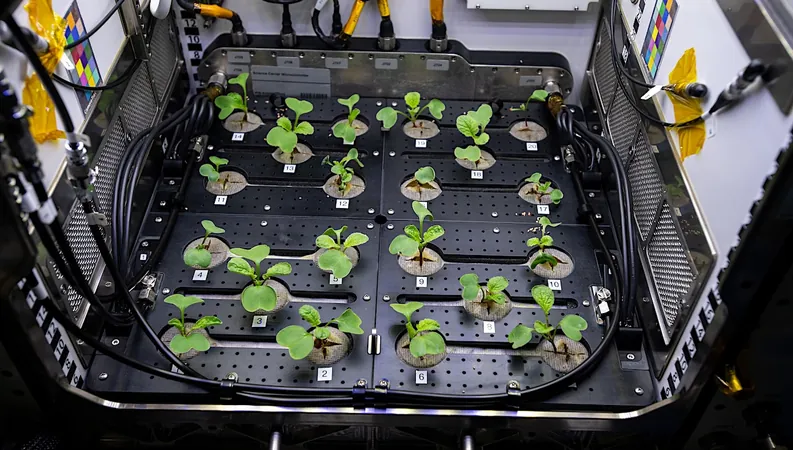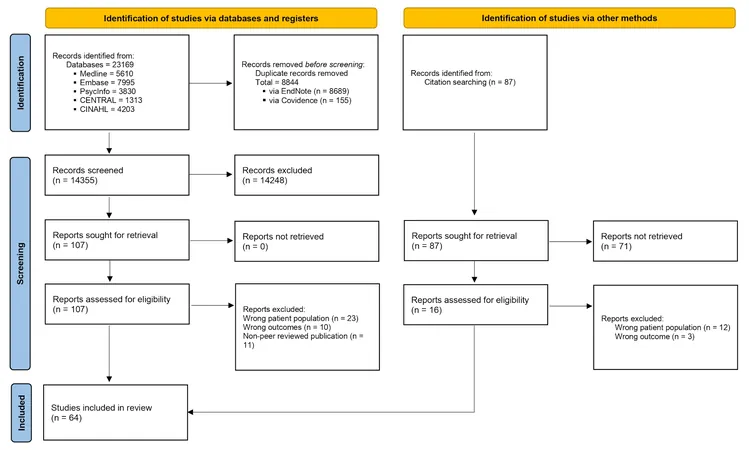
Unlocking Space Farming: How Microgreens Could Survive Heavy Radiation!
2025-01-10
Author: Ming
Unlocking Space Farming: How Microgreens Could Survive Heavy Radiation!
The quest to cultivate food in space presents a myriad of challenges, particularly due to the harsh extraterrestrial environment. Scientists are turning their attention to microgreens—nutrient-packed plants that may hold the key to providing essential nourishment for astronauts, offering a natural alternative to chemical food supplements.
As exciting as space farming sounds, the effects of space radiation on plant life remain poorly understood. When exposed to the varying intensities of radiation beyond our atmosphere, plants may undergo alterations that affect their growth and nutrient composition. This uncertainty sparks significant curiosity about the potential for certain species to thrive in such extreme conditions, particularly those that exhibit radio-resistance.
A recent study aimed to bridge this knowledge gap by investigating the morphological traits and photosynthetic pigment content of four microgreen species: basil, rocket, radish, and cress. Researchers subjected dry seeds of these plants to heavy ion irradiation, using iron and carbon ions at various doses ranging from 0.3 to 25 Gy. Their goal was to observe how these microgreens responded to acute radiation exposure, evaluating both their growth responses and pigmentation changes.
The findings revealed that microgreens exhibit highly species-specific reactions to ionizing radiation. Interestingly, instead of succumbing to stress, many of the plants responded positively, activating biochemical pathways similar to those triggered by more conventional environmental stresses. This reaction, often referred to as 'eustress', suggests that, over time, these plants could adapt to survive and even flourish in the long-term harsh realities of space.
Moreover, the research indicates that the morphological and pigment screenings could serve as valuable tools in identifying resilient plant species for future space missions. With further investigation, these microgreens might just be the pioneering crops that feed astronauts on missions to Mars and beyond.
As space agencies continue to explore new frontiers, the focus on sustainable food sources like microgreens is set to redefine how we think about nutrition in space. Could these tiny greens be the future of extraterrestrial agriculture? Only time—and more research—will tell!



 Brasil (PT)
Brasil (PT)
 Canada (EN)
Canada (EN)
 Chile (ES)
Chile (ES)
 Česko (CS)
Česko (CS)
 대한민국 (KO)
대한민국 (KO)
 España (ES)
España (ES)
 France (FR)
France (FR)
 Hong Kong (EN)
Hong Kong (EN)
 Italia (IT)
Italia (IT)
 日本 (JA)
日本 (JA)
 Magyarország (HU)
Magyarország (HU)
 Norge (NO)
Norge (NO)
 Polska (PL)
Polska (PL)
 Schweiz (DE)
Schweiz (DE)
 Singapore (EN)
Singapore (EN)
 Sverige (SV)
Sverige (SV)
 Suomi (FI)
Suomi (FI)
 Türkiye (TR)
Türkiye (TR)
 الإمارات العربية المتحدة (AR)
الإمارات العربية المتحدة (AR)